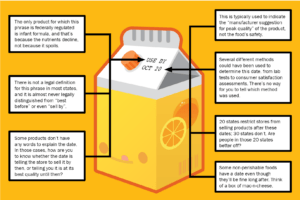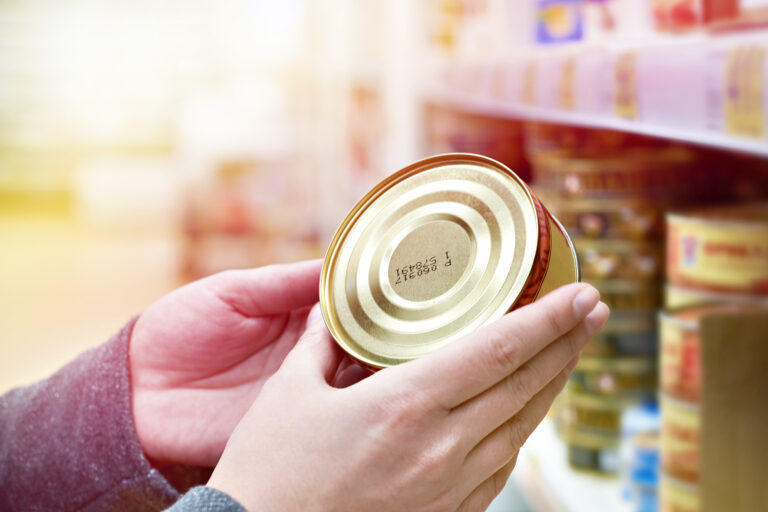Did you know that date labels aren’t regulated in the United States? Date labels are not required to be placed on 99% of food products, nor are there standard rules about what they mean. Confusion surrounding date labels can lead to a lot of good food being thrown away.
Here are some things to know about date labels:

– Natural Resource Defense Council Issue Brief, 2013, https://www.nrdc.org/sites/default/files/dating-game-IB.pdf
Now let’s debunk some myths so you can shop and eat with more confidence!
Myth 1: Food products are required to have a date label, that’s why they’re there.
Infant formula is the only product that is required by the Food and Drug Administration (FDA) to sport a date label, and that’s to ensure that the product contains no less than a minimum amount of each nutrient identified on the product label and that the product will be of acceptable quality.
Date labels on all other products are placed voluntarily by the manufacturers and are not regulated or overseen by a third party.
Myth 2: Food labels tell you whether food is safe to eat.
Food safety and quality are two different things that often get confused when it comes to date labels.
Manufacturers use labels at their own discretion and for a variety of reasons. The most common reason is to inform retailers and customers of the date up to which they can expect food to maintain its highest level of quality. Peak freshness is subjective and variable from company to company and across products. So don’t assume that just because the date on the label has passed that your food has spoiled or even that it tastes noticeably different.
Myth 3: Some labels really do denote expiration.
Labels on certain products may be designed by manufacturers to communicate food safety, especially those on raw meat and seafood, but there’s no way to tell between labels that do have such purpose and those that don’t. While these dates may sound authoritative, manufacturers are not required to obtain agency approval for the voluntary, quality-based date labels they use. They are also not required to specify how they determined the date they apply.
Keeping this in mind, make sure to store especially sensitive products as recommended by the USDA. The Natural Resource Defense Council’s (NRDC) food storage guide is a great resource for storage recommendations for meat and seafood.
Preventing Waste at Home
Take a major step to prevent your food from going bad by upgrading your food storage skills. Download our Storage, Freezing and Reviving guide to maximize the freshness of some of the most common foods you probably have at home. NRDC’s comprehensive and interactive food storage guide includes even more tips on how to store everything from beans and oils to seafood and meats.
Overlook the Mystery Date and Use your Senses Instead
Your senses can be a great judge of whether food should be eaten. If something smells and tastes good, it often is. Milk and yogurt are products that often outlast the date on the label (with proper storage of course!). So next time you’re looking through the fridge and not sure if you’ve waited too long to dig into a package, be brave and take a sniff before tossing food just based on the mysterious date on your package.
Want to dig in deeper? Read the NRDC’s issue brief on date labels.
